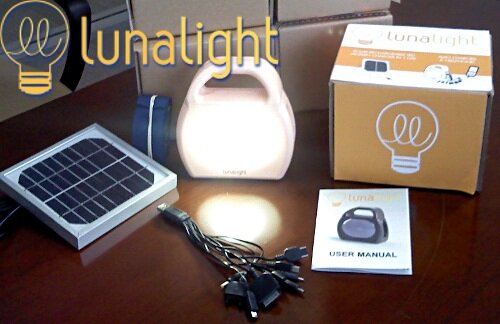
Five Cal Poly engineering students are finding a way to bring light to rural Kenya, turning hours of darkness into hours of opportunity.
Families in Kenya currently use kerosene lanterns as their source of light. The engineering senior project used this information to create an LED, solar-powered LunaLight that is a less expensive and safe alternative to kerosene, project adviser and professor Richard Savage said.
“This project is all about students here at Cal Poly recognizing there is a need out there in the world that we as engineers can serve,” Savage said.
Materials engineering senior Mike Deagen leads the senior project. He joined forces with the four other engineers to create the LunaLight after he took an internship last summer with the non-profit One Million Lights. One Million Lights is an organization which provides clean, healthy lighting by distributing solar lights around the world and replacing kerosene lamps, according to its website.
It is about developing a light source that optmizes users’ needs, Savage said.
“The LunaLight provides a better environment for children who often have to work all day in these communities,” Savage said. ”The kids don’t have time to do their schoolwork except at nighttime.”
Kerosene is expensive and toxic to both people as well as the environment, Savage said. Kerosene is also known to cause accidental fires as well as cancer and birth defects.
Deagen learned how to create circuit boards during his internship, so he was in charge of the project’s electronics portions.
Deagen had to test two circuits until they were working properly: One circuit is for a current on the LED while the other circuit is used to recharge the battery, he said.
Materials engineering senior Brian Mircheff researched the batteries to be used in the LunaLight. This required him to take optimal battery size into account.
Mircheff chose nickel metal hydride (NiMH) batteries because they are a standard rechargeable battery, he said. NiMH batteries can be found at a department or electronics store such as RadioShack. NiMH batteries aren’t as expensive as lithium ion batteries, which are typically used for laptop computers or digital cameras.
The NiMH batteries are also a more environmentally friendly choice compared to Nickel Cadmium batteries (NiCd), which are sometimes used for power tools. And these LunaLight’s batteries should last five years before needing to be replaced.
Mechanical engineering senior Ryan Ramelb was responsible for designing the LunaLight. At 2 pounds, the prototype is approximately 6-by-6 inches wide and 3 inches tall, with an attached 6-by-6-by-1 inch solar panel. Ramelb made the LunaLight compact with a handle on top, allowing the light to be easily transported. The group created molds of the LunaLight case so that they can make more LunaLights in the future.
Biomedical engineering senior Francisco Dye created the diffuser, a plastic screen on the LED light. The screen is necessary to prevent dust from getting into the light. It helps disperse the light so it is not just a concentrated beam.
“It’s an awesome feeling of giving back and opening the door for possibilities for people who didn’t necessarily know what was missing or what was possible,” Dye said. “That’s why I joined the project. It’s this idea that I am giving back to something bigger.”
Dye worked with materials engineering senior Sean Dawson to test the device, which must be bright enough for families to only use one LunaLight each.
The team measured the luminance of the light by using a light meter until it reached the most effective brightness. The LunaLight shines at approximately 150 lumens, whereas kerosene gives off less than a quarter of that. A 40-watt bulb that is used in most households is 450 lumens. The LunaLight lasts six-and-a-half hours on maximum brightness.
Five engineering students still weren’t quite enough. Business administration senior Sarah Lam and graphic communications senior Joyce Yoo volunteered their time to the project. Lam and Yoo designed posters, fliers and created the logo.
The LunaLight costs $100, but the cost will decrease as more are produced.
The LED light was the best choice for the LunaLight because they are bright and environmentally-friendly. Plus, LEDs are becoming more prevalent in society today.
“LEDs are the future of general lighting,” Deagen said.
Donations can be made at the One Million Lights website.
This article was written by Ashley DeVriend.
